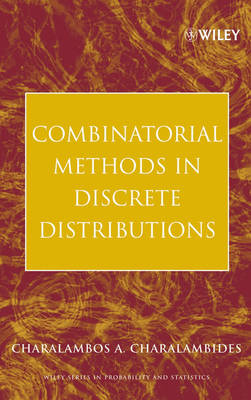Wiley Series Im Probability and Statistics
1 total work
Combinatorial Methods in Discrete Distributions
by Charalambos A. Charalambides
Published 1 January 2005
A unique approach illustrating discrete distribution theory through combinatorial methods This book provides a unique approach by presenting combinatorial methods in tandem with discrete distribution theory. This method, particular to discreteness, allows readers to gain a deeper understanding of theory by using applications to solve problems. The author makes extensive use of the reduction approach to conditional distributions of independent random occupancy numbers, and provides excellent studies of occupancy and sequential occupancy distributions, convolutions of truncated discrete distributions, and compound and mixture distributions. Combinatorial Methods in Discrete Distributions begins with a brief presentation of set theory followed by basic counting principles. Fundamental principles of combinatorics, finite differences, and discrete probability are included to give readers the necessary foundation to the topics presented in the text.
A thorough examination of the field is provided and features:* Stirling numbers and generalized factorial coefficients* Occupancy and sequential occupancy distributions* n-fold convolutions of truncated distributions* Compound and mixture distributions Thoroughly worked examples aid readers in understanding complex theory and discovering how theory can be applied to solve practical problems. An appendix with hints and answers to the exercises helps readers work through the more complex sections. Reference notes are provided at the end of each chapter, and an extensive bibliography offers readers a resource for additional information on specialized topics.
A thorough examination of the field is provided and features:* Stirling numbers and generalized factorial coefficients* Occupancy and sequential occupancy distributions* n-fold convolutions of truncated distributions* Compound and mixture distributions Thoroughly worked examples aid readers in understanding complex theory and discovering how theory can be applied to solve practical problems. An appendix with hints and answers to the exercises helps readers work through the more complex sections. Reference notes are provided at the end of each chapter, and an extensive bibliography offers readers a resource for additional information on specialized topics.
